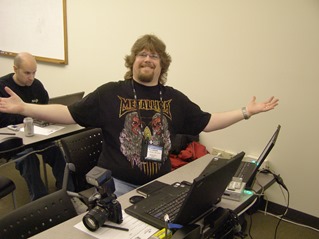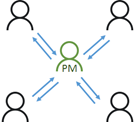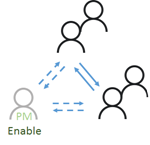Ask Learn
Preview
Please sign in to use this experience.
Sign inThis browser is no longer supported.
Upgrade to Microsoft Edge to take advantage of the latest features, security updates, and technical support.
Note
Access to this page requires authorization. You can try signing in or changing directories.
Access to this page requires authorization. You can try changing directories.
You may remember a session at the MVP Summit 2007. The founder of the ALM Rangers, Bijan Javidi, entered the room, introduced the program, mentioned a few interesting solutions, left the building, and vanished. Based on these pictures, Brian and Etienne were present ![]()


In those days, the program felt like a secret society. That’s until a few MVPs were invited to join the branching and merging guidance project, producing visuals such as these examples.
Let’s have a look at four events on the following graph.
What’s not evident from the graph, is that the program and its membership changed from an internal-only group, to a diverse and vibrant community. We evolved into a community with more than 60% of the members originating from the MVP and other communities.
Self-organized teams
In previous years the community was very dependent on the Program Manager (PM) and a prescriptive engineering process.

By embracing the concept of self-organized and autonomous teams, we empowered and re-energized the community. The teams, our people, are empowered to improve their engineering process and share their experience with others. As a result, all our extension teams now rely on automated pipelines, that build, test, and deploy their solutions to a number of environments. We are observing more frequent and consistent deliverables, more excitement and collaboration amongst the teams, and a quality bar that is steadily climbing. The dependency on the Program Manager is slowly evaporating, as our community PM role is changing from management to enablement.

Learn, experience, and shareAs outlined in our manifest we believe in collaboration, learning and educating each other, and sharing our knowledge transparently and freely. It’s a symbiotic relationship between communities and users, built on trust, respect, and free collaboration.
Walk in the user’s shoes
A pillar of strength of our community are the engineers who implement, support, and troubleshoot the technologies in the field. They bring a real-world view to the community and product teams. Earlier this year we decided to take it a step further, by visiting regional partners and customers. The goal is to meet face to face, then to sync-up regularly to listen to, observe, and enable them in their world.
We’ll discuss these and other innovations in-depth in future posts.
Predictions we made a year ago, which we are monitoring closely:
A few new predictions to consider for the future:
So, what’s your thoughts on our transformation, the innovations, and the handful of predictions? Please add a comment and start a conversation.
In the next post of this series, Brian Blackman will explore how we pivoted from a process driven to a self-organised community. See you there.
Please sign in to use this experience.
Sign in